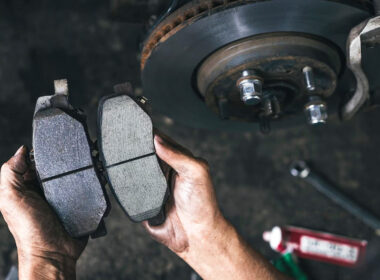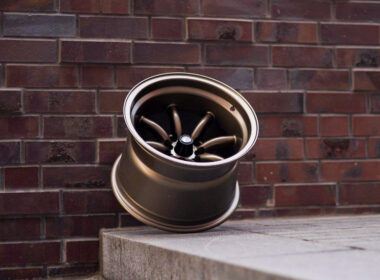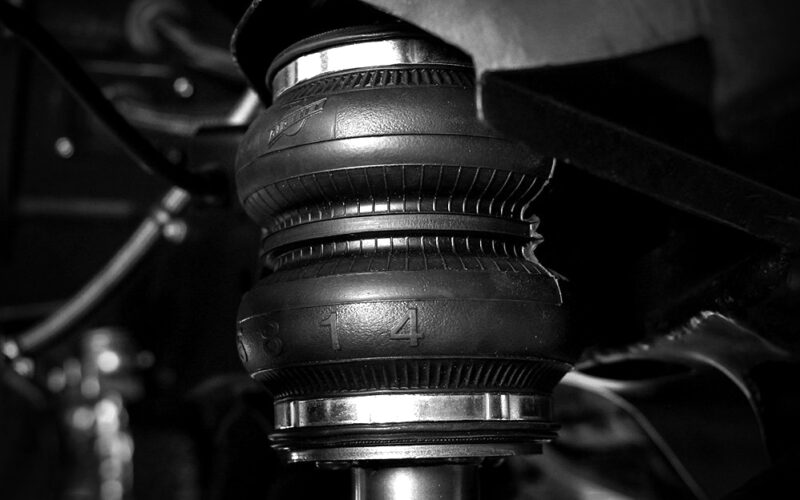The whole “static vs. bagged” debate has slowly gained equilibrium as more and more enthusiasts are choosing to run air springs over coil springs, and that too without any problems.
Gone are the days when air suspension was only for low-riders and aggressively stanced cars. Tech has improved to the point where your bagged car can easily double up as a daily driver and a weekend track toy.
That’s not to say that bags are objectively better than coils at the track — they’re not. There’s definitely more peace of mind with coilovers, but unless you’re chasing tenths, you’ll be absolutely alright with air suspension.
Read on to learn about the dos and don’ts of air suspension, why you should install it, and find some of the best options for your car.
Why Air Suspension?

The more accurate question is “how do air bags stack up against coilovers?”, and it’s one we get asked a lot. Coilovers aren’t the be all and end all when it comes to upgraded suspension setups.
For instance, even a set of decent lowering springs and aftermarket shocks can turn out to be surprisingly good, especially when compared to similarly priced coilovers.
But if you’re someone who cares about usability and practicality, then air bags are the absolute bees knees. Think about all the things you can do with a bagged car. You can track it, daily it, stance it, and lay frame whenever or wherever you want. What’s not to love?
Coilovers definitely offer reliability and peace of mind on the track. But if you want to be able to do a bit of everything and get as much seat time as possible, then air suspension is definitely worth considering.
Pros and Cons at a Glance

Without diving into too much detail, here’s a quick look at some of the pros and cons of air suspension.
As obvious as it sounds, the main advantage is adjustable ride height. This feature alone will make things so much easier. You’ll have a better approach and departure angles over obstacles where lowered cars typically scrape.
For instance, you can raise the front end to get on a toe truck or on driveways. If you drive a truck with a loaded bed, then air suspension will help you to level the truck out, regardless of how heavy the payload is. The practicality is unparalleled.
The disadvantages have a lot to do with air suspension kits being expensive, relatively complicated to install, and the lack of on-the-fly repair.
The Setup

How you set up your air suspension can make or break your experience. It needs to be a complete wire-tuck; we cannot overstate how important it is to do it right the first time.
Things like planning your wiring route, deciding on the perfect position for the tank, not forcing the air lines in cramped areas, and torquing down your struts to the right specs are vital.
You need to make sure the whole setup works perfectly before reassembling your car. Though it really depends on what kit you buy, here are some of the parts that you’re definitely going to come across:
- Air compressor
- Struts with bellows
- ECU
- Air supply lines
- Height control valves
- Solenoid valve manifold
We recommend getting your air suspension installed by a technician. But if you’re mechanically inclined and have a buddy who can help you, then this is something you can knock out in an afternoon.
Reliability

Reliability and high cost of maintenance is what deters most people from installing air suspension, with temperature fluctuations, leaks, and puncture risk being the top concerns.
As you probably know, air expands on heating, which can be problematic for air springs. Even though fluctuations in ambient air temperature are never jarring enough to create problems with your air suspension, the heat from your engine might just do that.
Luckily, air suspension manufacturers take stuff like this into consideration and build workarounds that keep the system reliable.
For example, if the height sensing system detects an increased volume of air due to temperature fluctiation, it will automatically drop the air pressure within the air bag to keep it neutral.
Freezing is another concern during harsh winters; you don’t want to see condensation build up in the tank and air lines, because then they’ll freeze and choke up. To avoid this, you can use air brake antifreeze in the air tank.
Buy a kit from a reputable manufacturer, keep the air lines sealed, and inspect the system every once in a while. As long as you stay on top of these things, your air suspension system will work flawlessly.
It’s worth noting that most air suspension failures can be attributed to user error.
Handling

Think of air springs as coil springs but with adjustable spring rates. When you drop your ride height using your air suspension system, you not only go lower, but you also stiffen up your air spring.
The lower your car, the stiffer the spring has to be to keep it from bottoming out the damper. This feature makes your car more adaptable to different road conditions.
But just like any other suspension, it needs to be fine tuned to get the most out of it. No suspension system works flawlessly right out of the box.
So if you’re picky about your spring stiffness and like the idea of being able to switch from soft to stiff at the push of a button, then you’ll be happy with bags.

That said, if you’re all about cornering performance and dialing in your weight transfer characteristics down to a T, then stick to coilovers and adjustable control arms.
FAQs

If you have a budget for moderately expensive coilovers but don’t really need flat-out performance, then definitely consider bags. You won’t regret the added comfort.
Still on the fence? Take a look at some of the questions we get asked about air suspension.
What Happens When Air Suspension Fails?
You’ll definitely know when your air suspension system fails. The first few symptoms include sagging ride height, and you’ll observe that your adjustable ride height features will no longer function.
Leaks in your air lines or punctured bags will cause this problem. That’s why it’s super important that the installation is done right. Repairs with systems like these are typically very expensive.
Can I Track My Bagged Car?
Absolutely! You can comfortably drive it to the track as well. Most aftermarket air suspension kits are track tested.
The more you spend on your kit, the more suspension parameters you can adjust, which is always a good thing if you’re looking to improve your lap times.
But if you’re building a dedicated track car, then you’re better off with coils instead; nothing else quite compares the control that a good coil spring and shock combo gives you.
How Does Air Suspension Work?
Think of air suspension struts as coilovers, but instead of a coil spring, you have a bag or bellow that is filled with air — a bagover, if you will.
An air compressor draws atmospheric air into a pump which then feeds it into the bellows via air supply lines.
The system includes height sensors that monitor any changes in the height of your axles relative to the chassis. Sensors can be electric or mechanical depending on how they’re implemented by the manufacturer.
The data from these sensors is read by an ECU which then sends signals to open or close the solenoid valves in order to inflate or deflate the air bellows.
Wrapping Up

Ready to get your first air suspension kit on order? Browse through our range of products and find the perfect fit for your car.
Don’t forget to consider installing sway bars and adjustable control arms to go with your new suspension setup!




